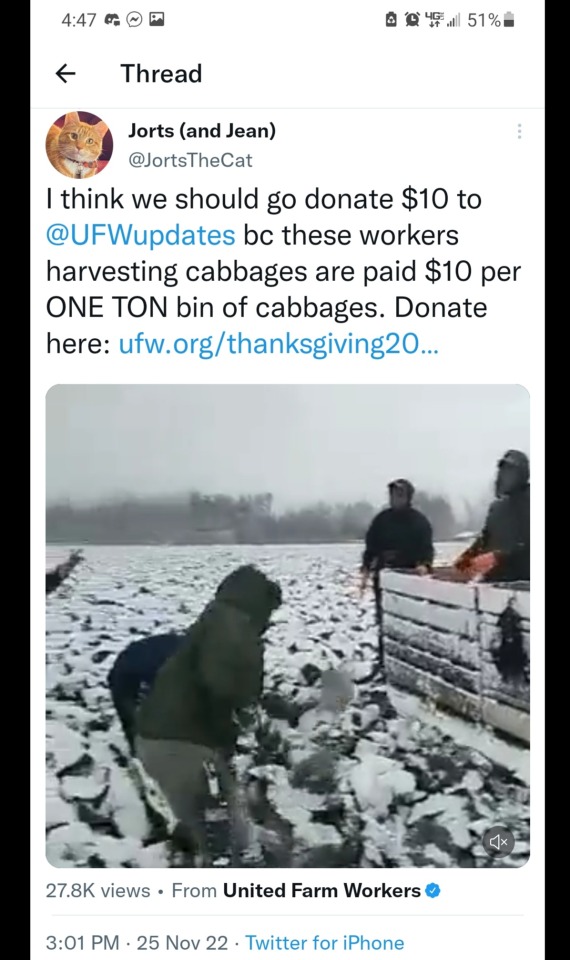#united farm workers
Note
OK, I'll bite - what's the deal with the United Farm Workers? What were their strengths and weaknesses compared to other labor unions?
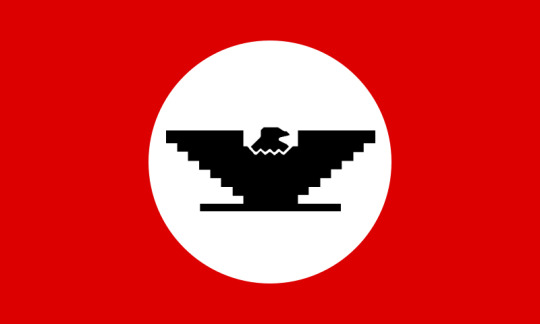
It is not an easy thing to talk about the UFW, in part because it wasn't just a union. At the height of its influence in the 1960s and 1970s, it was also a civil rights movement that was directly inspired by the SCLC campaigns of Martin Luther King and owed its success as much to mass marches, hunger strikes, media attention, and the mass mobilization of the public in support of boycotts that stretched across the United States and as far as Europe as it did to traditional strikes and picket lines.
It was also a social movement that blended powerful strains of Catholic faith traditions with Chicano/Latino nationalism inspired by the black power movement, that reshaped the identity of millions away from asimilation into white society and towards a fierce identification with indigeneity, and challenged the racist social hierarchy of rural California.
It was also a political movement that transformed Latino voting behavior, established political coalitions with the Kennedys, Jerry Brown, and the state legislature, that pushed through legislation and ran statewide initiative campaigns, and that would eventually launch the careers of generations of Latino politicians who would rise to the very top of California politics.
However, it was also a movement that ultimately failed in its mission to remake the brutal lives of California farmworkers, which currently has only 7,000 members when it once had more than 80,000, and which today often merely trades on the memory of its celebrated founders Dolores Huerta and Cesar Chavez rather than doing any organizing work.
To explain the strengths and weaknesses of the UFW, we have to start with some organizational history, because the UFW was the result of the merger of several organizations each with their own strengths and weaknesses.
The Origins of the UFW:
To explain the strengths and weaknesses of the UFW, we have to start with some organizational history, because the UFW was the result of the merger of several organizations each with their own strengths and weaknesses.
In the 1950s, both Dolores Huerta and Cesar Chavez were community organizers working for a group called the Community Service Organization (an affiliate of Saul Alinsky's Industrial Areas Foundation) that sought to aid farmworkers living in poverty. Huerta and Chavez were trained in a novel strategy of grassroots, door-to-door organizing aimed not at getting workers to sign union cards, but to agree to host a house meeting where co-workers could gather privately to discuss their problems at work free from the surveillance of their bosses. This would prove to be very useful in organizing the fields, because unlike the traditional union model where organizers relied on the NRLB's rulings to directly access the factory floors, Central California farms were remote places where white farm owners and their white overseers would fire shotguns at brown "trespassers" (union-friendly workers, organizers, picketers).
In 1962, Chavez and Huerta quit CSO to found the National Farm Workers Association, which was really more of a worker center offering support services (chiefly, health care) to independent groups of largely Mexican farmworkers. In 1965, they received a request to provide support to workers dealing with a strike against grape growers in Delano, California.
In Delano, Chavez and Huerta met Larry Itliong of the Agricultural Workers Organizing Committee (AWOC), which was a more traditional labor union of migrant Filipino farmworkers who had begun the strike over sub-minimum wages. Itliong wanted Chavez and Huerta to organize Mexican farmworkers who had been brought in as potential strikebreakers and get them to honor the picket line.
The result of their collaboration was the formation of the United Farm Workers as a union of the AFL-CIO. The UFW would very much be marked by a combination of (and sometimes conflict between) AWOC's traditional union tactics - strikes, pickets, card drives, employer-based campaigns, and collective bargaining for union contracts - and NFWA's social movement strategy of marches, boycotts, hunger strikes, media campaigns, mobilization of liberal politicians, and legislative campaigns.
1965 to 1970: the Rise of the UFW:
While the strike starts with 2,000 Filipino workers and 1,200 Mexican families targeting Delano area growers, it quickly expanded to target more growers and bring more workers to the picket lines, eventually culminating in 10,000 workers striking against the whole of the table grape growers of California across the length and breadth of California.
Throughout 1966, the UFW faced extensive violence from the growers, from shotguns used as "warning shots" to hand-to-hand violence, to driving cars into pickets, to turning pesticide-spraying machines onto picketers. Local police responded to the violence by effectively siding with the growers, and would arrest UFW picketers for the crime of calling the police.
Chavez strongly emphasized a non-violent response to the growers' tactics - to the point of engaging in a Gandhian hunger strike against his own strikers in 1968 to quell discussions about retaliatory violence - but also began to employ a series of civil rights tactics that sought to break what had effectively become a stalemate on the picket line by side-stepping the picket lines altogether and attacking the growers on new fronts.
First, he sought the assistance of outside groups and individuals who would be sympathetic to the plight of the farmworker and could help bring media attention to the strike - UAW President Walter Reuther and Senator Robert Kennedy both visited Delano to express their solidarity, with Kennedy in particular holding hearings that shined a light on the issue of violence and police violations of the civil rights of UFW picketers.
Second, Chavez hit on the tactic of using boycotts as a way of exerting economic pressure on particular growers and leveraging the solidarity of other unions and consumers - the boycotts began when Chavez enlisted Dolores Huerta to follow a shipment of grapes from Schenley Industries (the first grower to be boycotted) to the Port of Oakland. There, Huerta reached out to the International Longshoremen's and Warehousemen's Union and persuaded them to honor the boycott and refuse to handle non-union grapes. Schenley's grapes started to rot on the docks, cutting them off from the market, and between the effects of union solidarity and growing consumer participation in the UFW's boycotts, the growers started to come under real economic pressure as their revenue dropped despite a record harvest.
Throughout the rest of the Delano grape strike, Dolores Huerta would be the main organizer of the national and internal boycotts, travelling across the country (and eventually all the way to the UK) to mobilize unions and faith groups to form boycott committees and boycott houses in major cities that in turn could educate and mobilize ordinary consumers through a campaign of leafleting and picketing at grocery stores.
Third, the UFW organized the first of its marches, a 300-mile trek from Delano to the state capital of Sacramento aimed at drawing national attention to the grape strike and attempting to enlist the state government to pass labor legislation that would give farmworkers the right to organize. Carefully organized by Cesar Chavez to draw on Mexican faith traditions, the march would be labelled a "pilgrimage," and would be timed to begin during Lent and culminate during Easter. In addition to American flags and the UFW banner, the march would be led by "pilgrims" carrying a banner of Our Lady of Guadelupe.
While this strategy was ultimately effective in its goal of influencing the broader Latino community in California to see the UFW as not just a union but a vehicle for the broader aspirations of the whole Latino community for equality and social justice, what became known in Chicano circles as La Causa, the emphasis on Mexican symbolism and Chicano identity contributed to a growing tension with the Filipino half of the UFW, who felt that they were being sidelined in a strike they had started.
Nevertheless, by the time that the UFW's pilgrimage arrived at Sacramento, news broke that they had won their first breakthrough in the strike as Schenley Industries (which had been suffering through a four-month national boycott of its products) agreed to sign the first UFW union contract, delivering a much-needed victory.
As the strike dragged on, growers were not passively standing by - in addition to doubling down on the violence by hiring strikebreakers to assault pro-UFW farmworkers, growers turned to the Teamsters Union as a way of pre-empting the UFW, either by pre-emptively signing contracts with the Teamsters or effectively backing the Teamsters in union elections.
Part of the darker legacy of the Teamsters is that, going all the back to the 1930s, they have a nasty habit of raiding other unions, and especially during their mobbed-up days would work with the bosses to sign sweetheart deals that allowed the Teamsters to siphon dues money from workers (who had not consented to be represented by the Teamsters, remember) while providing nothing in the way of wage increases or improved working conditions, usually in exchange for bribes and/or protection money from the employers. Moreover, the Teamsters had no compunction about using violence to intimidate rank-and-file workers and rival unions in order to defend their "paper locals" or win a union election. This would become even more of an issue later on, but it started up as early as 1966.
Moreover, the growers attempted to adapt to the UFW's boycott tactics by sharing labels, such that a boycotted company would sell their products under the guise of being from a different, non-boycotted company. This forced the UFW to change its boycott tactics in turn, so that instead of targeting individual growers for boycott, they now asked unions and consumers alike to boycott all table grapes from the state of California.
By 1970, however, the growing strength of the national grape boycott forced no fewer than 26 Delano grape growers to the bargaining table to sign the UFW's contracts. Practically overnight, the UFW grew from a membership of 10,000 strikers (none of whom had contracts, remember) to nearly 70,000 union members covered by collective bargaining agreements.
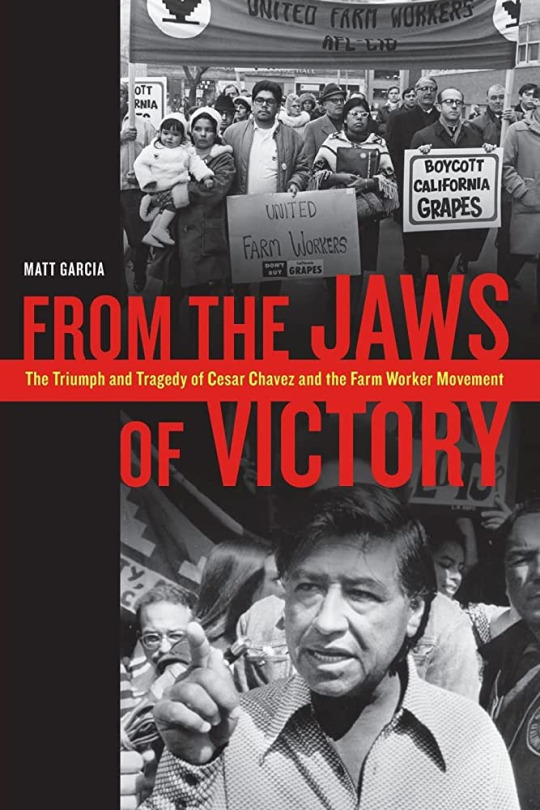
1970 to 1978: The UFW Confronts Internal and External Crises
Up until now, I've been telling the kind of simple narrative of gradual but inevitable social progress that U.S history textbooks like, the Hollywood story of an oppressed minority that wins a David and Goliath struggle against a violent, racist oligarchy through the kind of non-violent methods that make white allies feel comfortable and uplifted. (It's not an accident that the bulk of the 2014 film Cesar Chavez starring Michael Peña covers the Delano Grape Strike.)
It's also the period in which the UFW's strengths as an organization that came out of the community organizing/civil rights movement were most on display. In the eight years that followed, however, the union would start to experience a series of crises that would demonstrate some of the weaknesses of that same institutional legacy. As Matt Garcia describes in From the Jaws of Victory, in the wake of his historic victory in 1970, Cesar Chavez began to inflict a series of self-inflicted injuries on the UFW that crippled the functioning of the union, divided leadership and rank-and-file alike, and ultimately distracted from the union's external crises at a time when the UFW could not afford to be distracted.
That's not to say that this period was one of unbroken decline - as we'll discuss, the UFW would win many victories in this period - but the union's forward momentum was halted and it would spend much of the 1970s trying to get back to where it was at the very start of the decade.
To begin with, we should discuss the internal contradictions of the UFW: one of the major features of the UFW's new contracts was that they replaced the shape-up with the hiring hall. This gave the union an enormous amount of power in terms of hiring, firing and management of employees, but the quid-pro-quo of this system is that it puts a significant administrative burden on the union. Not only do you have to have to set up policies that fairly decide who gets work and when, but you then have to even-handedly enforce those policies on a day-to-day basis in often fraught circumstances - and all of this is skilled white-collar labor.
This ran into a major bone of contention within the movement. When the locus of the grape strike had shifted from the fields to the urban boycotts, this had made a new constituency within the union - white college-educated hippies who could do statistical research, operate boycott houses, and handle media campaigns. These hippies had done yeoman's work for the union and wanted to keep on doing that work, but they also needed to earn enough money to pay the rent and look after their growing families, and in general shift from being temporary volunteers to being professional union staffers.
This ran head-long into a buzzsaw of racial and cultural tension. Similar to the conflicts over the role of white volunteers in CORE/SNCC during the Civil Rights Movement, there were a lot of UFW leaders and members who had come out of the grassroots efforts in the field who felt that the white college kids were making a play for control over the UFW. This was especially driven by Cesar Chavez' religiously-inflected ideas of Catholic sacrifice and self-denial, embodied politically as the idea that a salary of $5 a week (roughly $30 a week in today's money) was a sign of the purity of one's "missionary work." This worked itself out in a series of internicene purges whereby vital college-educated staff were fired for various crimes of ideological disunity.
This all would have been survivable if Chavez had shown any interest in actually making the union and its hiring halls work. However, almost from the moment of victory in 1970, Chavez showed almost no interest in running the union as a union - instead, he thought that the most important thing was relocating the UFW's headquarters to a commune in La Paz, or creating the Poor People's Union as a way to organize poor whites in the San Joaquin Valley, or leaving the union altogether to become a Catholic priest, or joining up with the Synanon cult to run criticism sessions in La Paz. In the mean-time, a lot of the UFW's victories were withering on the vine as workers in the fields got fed up with hiring halls that couldn't do their basic job of making sure they got sufficient work at the right wages.

Externally, all of this was happening during the second major round of labor conflicts out in the fields. As before, the UFW faced serious conflicts with the Teamsters, first in the so-called "Salad Bowl Strike" that lasted from 1970-1971 and was at the time the largest and most violent agricultural strike in U.S history - only then to be eclipsed in 1973 with the second grape strike. Just as with the Salinas strike, the grape growers in 1973 shifted to a strategy of signing sweetheart deals with the Teamsters - and using Teamster muscle to fight off the UFW's new grape strike and boycott. UFW pickets were shot at and killed in drive-byes by Teamster trucks, who then escalated into firebombing pickets and UFW buildings alike.
After a year of violence, reduced support from the rank-and-file, and declining resources, Chavez and the UFW felt that their backs were up against a wall - and had to adjust their tactics accordingly. With the election of Jerry Brown as governor in 1974, the UFW pivoted to a strategy of pressuring the state government to enact a California Agricultural Labor Relations Act that would give agricultural workers the right to organize, and with that all the labor protections normally enjoyed by industrial workers under the Federal National Labor Relations Act - at the cost of giving up the freedom to boycott and conduct secondary strikes which they had had as outsiders to the system.

This led to the semi-miraculous Modesto March, itself a repeat of the Delano-to-Sacramento march from the 1960s. Starting as just a couple hundred marchers in San Francisco, the March swelled to as many as 15,000-strong by the time that it reached its objective at Modesto. This caused a sudden sea-change in the grape strike, bringing the growers and the Teamsters back to the table, and getting Jerry Brown and the state legislature to back passage of California Agricultural Labor Relations Act.
This proved to be the high-water mark for the UFW, which swelled to a peak of 80,000 members. The problem was that the old problems within the UFW did not go away - victory in 1975 didn't stop Chavez and his Chicano constituency feuding with more distinctively Mexican groups within the movement over undocumented immigration, nor feuding with Filipino constituencies over a meeting with Ferdinand Marcos, and nor escalating these internal conflicts into a series of leadership purges.
Conclusion: Decline and Fall
At the same time, the new alliance with the Agricultural Labor Relations Board proved to be a difficult one for the UFW. While establishment of the agency proved to be a major boon for the UFW, which won most of the free elections under CALRA (all the while continuing to neglect the critical hiring hall issue), the state legislature badly underfunded ALRB, forcing the agency to temporarily shut down. The UFW responded by sponsoring Prop 14 in the 1976 elections to try to empower ALRB, and then got very badly beaten in that election cycle - and then, when Republican George Deukmejian was elected in 1983, the ALRB was largely defunded and unable to achieve its original elective goals.
In the wake of Deukmejian, the UFW went into terminal decline. Most of its best organizers had left or been purged in internal struggles, their contracts failed to succeed over the long run due to the hiring hall problem, and the union basically stopped organizing new members after 1986.
#history#u.s history#labor history#ufw#united farm workers#cesar chavez#dolores huerta#trade unions#social history#social movements#unions
56 notes
·
View notes
Text

#murals#northen ireland#ireland#james connolly#emiliano zapata#belfast#north of ireland#Óglaigh na hÉireann#united farm workers#mexico#own post
98 notes
·
View notes
Text
Ostrom Mushroom plant sold, but the workers’ fight continues. Help us track how mushrooms move across North America.
We wrote to you earlier this month about Ostrom mushrooms in Sunnyside, WA and the David vs. Goliath battle workers were going through to get union representation and justice on the job. The situation has escalated.
The day after we sent out our alert, on February 14th, 2023 - ironically on Valentine’s Day - the workers were called into an all-team meeting and told that, effective at midnight, Ostrom was bought by Greenwood Mushrooms, a company owned by Windmill Farms. As a result, all of the Ostrom employees were immediately fired.
The workers were then given a letter offering "new" employment under the new management -- at lower wages, in less preferable jobs, and all under an arbitration agreement for any labor disputes. Workers were given only hours to sign.
Ostrom Mushrooms is being renamed "Greenwood Mushrooms Sunnyside." The Greenwood Mushrooms label is currently being used at Windmill Farms facilities in Pennsylvania and Canada. Windmill Farms is owned by InStar, a Canadian private equity firm.
We need your help to track how mushrooms are grown and sold across North America.
We need to know which brands of mushrooms are sold in which stores in the United States and Canada – including non-Sunnyside WA mushrooms. The Ostrom label may change to Greenwood Mushrooms, Windmill Mushrooms, store brand packaging or even a new label we haven’t heard of yet. Help us ensure they don't hide their labels or sell mushrooms under a different brand to avoid being accountable to their employees and consumers.
Take 2 minutes to help us the next time you go grocery shopping:
Check out the labeling on the mushrooms your store carries.
Snap a photo of the mushroom package, and if there is a box of loose mushrooms, snap a photo of that too. Send to [email protected] along with the store name, the location and the day you saw it.
We’ve launched a website at www.ufw.org/ostrom so you can follow this campaign. Find the latest campaign media coverage, photos and videos; sign the pledge; see worker videos explaining their fight and more.
Please help these workers next time you go shopping and please reach out to your friends in other cities. An extra minute or two can help these Sunnyside mushroom workers in their fight to win their UFW contract.
Feb 24 2023: United Farm Workers is asking for the public's help in identifying what mushroom farms' products are sold where across the U.S. and Canada. Among other things, this allows them to track what stores are buying from Ostrom and if Ostrom is changing branding to evade boycotts.
This is an example of what to look for:

Again, they are looking for ALL brands right now, not just Ostrom, Greenwood, or Windmill, in order to better understand distribution.
49 notes
·
View notes
Text

¡Viva La Huelga! ¡Viva Los Campesinos!
Celebrating the life and work of Cesar Chavez, 2024.
#art#artists on tumblr#digital art#vintage#expiremental#design#ufw#cesar chavez#viva la huelga#viva los campesinos#popart#pop art#graphic design#expiremental music#poster art#poster design#vintage posters#united farm workers#si se puede#dolores huerta#philip vera cruz#united farm workers union#cesar chavez day#civil rights#us politics#politics#socialism#communism#leftism#late stage capitalism
4 notes
·
View notes
Text
123 notes
·
View notes
Photo


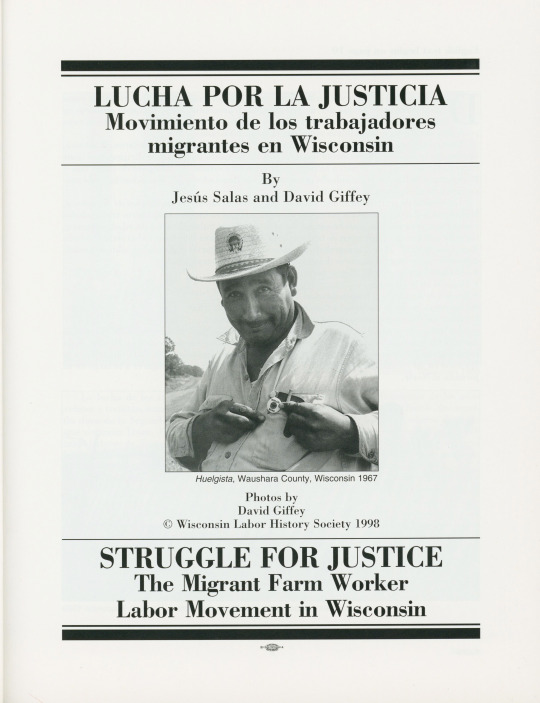
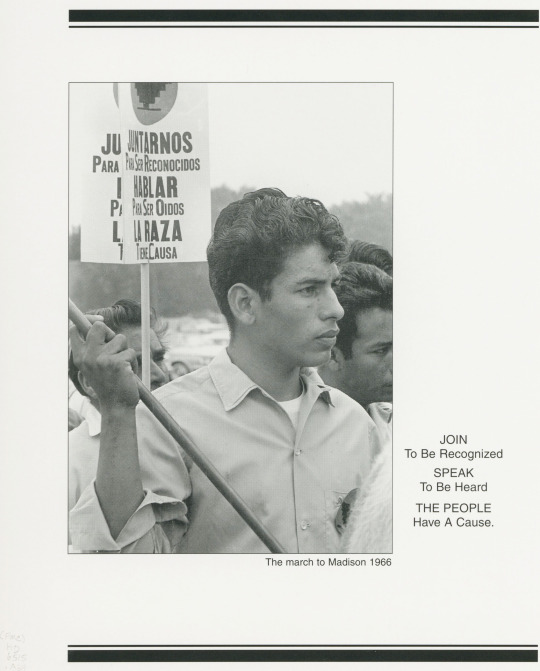
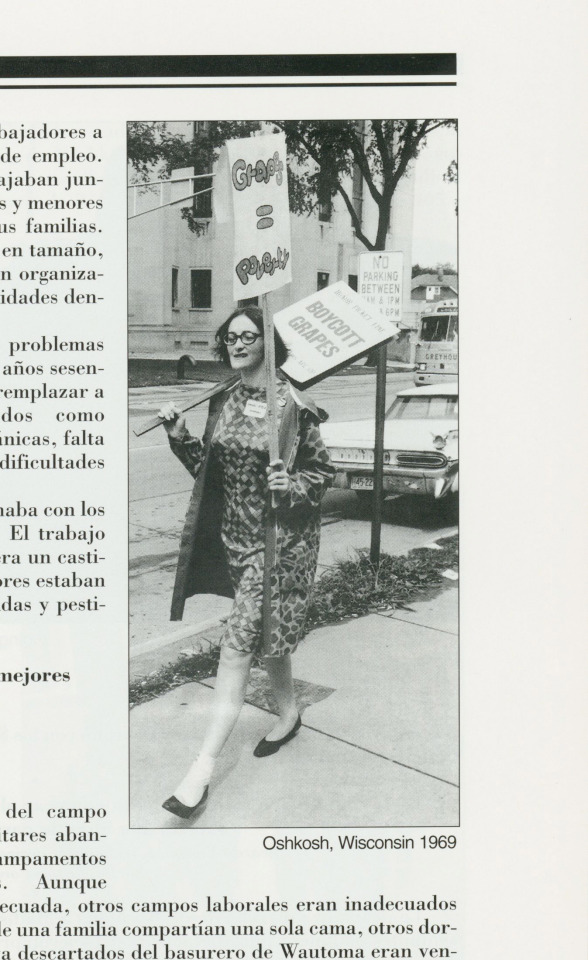



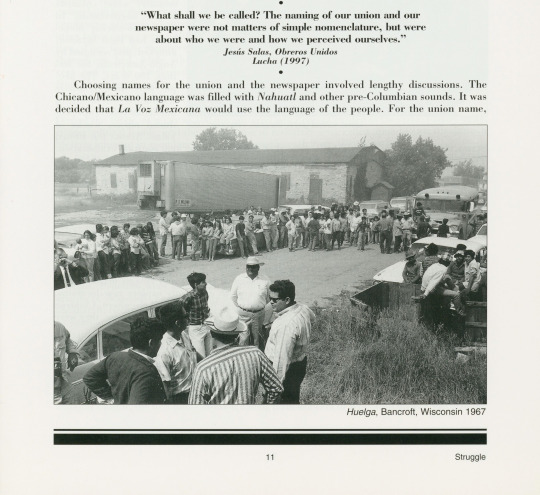
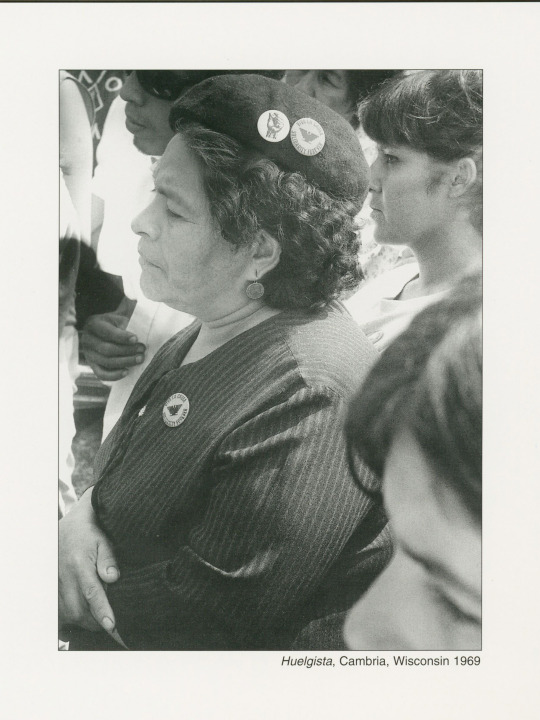
Labor Day 2022
Today is Labor Day, a holiday in celebration of the workers of the United States and the struggle of the Labor Movement for the rights and freedoms workers have today. It is a good day to remember that for many the fight is not over, and that we should support our fellow workers whenever possible.
In that light, we’re sharing Lucha por la Justicia / Struggle for Justice published by the Wisconsin Labor History Society in 1998. The book is about the migrant farm worker labor movement in Wisconsin, and in particular strikes and boycotts of the mid-1960s. Agricultural workers, and especially those who are migrant workers, are one of the least protected groups of workers in the country. in 1966, migrant workers in Wisconsin marched 80 miles from Wautoma to Madison to present their demands to the state government. Among their demands were improved housing, a $1.25 minimum hourly wage, and accident and hospitalization insurance. Agricultural workers in Wisconsin also participated in and raised awareness for the Delano Grape Strike of the late 1960s.
Just last week, members of United Farm Workers union in California marched 335 miles from Delano to Sacramento in support of a bill that would make it easier for agricultural workers in the state to vote in union elections. Currently they can only vote in person in union elections, which creates opportunities for retaliation and intimidation by farm owners against those who vote to unionize and prevents migrant workers from voting if they are not in the state at the time of the election. Renowned internet labor supporter and cat Jorts supported their march by marching his furry little paws around his place of employment (which is unionized, fyi). Unions are one of the best ways for workers to make sure that they are not exploited and allow them to collectively bargain with their bosses for fair wages and treatment.
So, as we enjoy our long weekend and most likely grill some burgers and hotdogs and enjoy some sweet corn from a roadside stand, let’s not forget the workers who literally make it possible for us to have food on our tables (or any workers!).
-- Alice, Special Collections Department Manager
#Labor Day#unions#strikes#huelga#Delano Grape Strike#United Farm Workers#Wisconsin Labor History Society#farm workers#agricultural workers#Jorts the Cat#Jorts and Jean#Jorts#holidays#Alice
79 notes
·
View notes
Text

United Farmworkers of America mural in Modesto, California.
6 notes
·
View notes
Text

4 notes
·
View notes
Note
I was rereading some of your old union questions and I was wondering if there was some reason why hiring halls wasn't more common.
So I discuss hiring halls a bit here, but just to explain to new readers, a hiring hall is a particular mode of labor relations whereby the union takes over the power to hire and fire workers from management while agreeing to provide workers to a given job site upon request from a business that has a contract with the union. One way to think of it is that the union has essentially put the HR department under worker control.

The union then undertakes to match requests for a certain number of workers to the same number of union members (in the case of a closed shop) or dues-paying workers (in the case of an agency shop) who have applied to the hiring hall for work. In order to prevent corruption and favoritism, the union assigns or refers workers on the basis of some non-discriminatory rule. To quote from IATSE (the theater worker's union) Local #18's rules for referrals:
"Referrals are to be based upon such recognized factors as ability to perform specific services requested by said Employer, availability for employment at the time of such request, and seniority as defined by the length of service in the industry or for a specific employer."
Finally, the hiring hall also undertakes a responsibility that the labor that it's providing to employers is of high quality. At a minimum, this involves keeping detailed records on union members' "good conduct" on the job site. Most hiring halls tend to require, in addition to union membership and/or dues, that a worker has completed an apprenticeship or other form of licensing or certification process in a trade, and has a minimum amount of experience as a trainee. Finally, some hiring halls even attempted to regulate personal behavior standards when it came to alcohol, on the grounds that workers who are habitual alcoholics are likely to drink on the job, which compromises the quality of their labor.
Hiring halls tend to be confined to a fairly narrow set of industries - you see them in construction, longshoring and warehousing, maritime, theater, agriculture. So why aren't they more common?
Well, one major factor is that employers tend to be highly resistant to allowing unions to take over something that they consider to be a core role of management - and thus it's kind of the last thing they'd agree to in a union contract. Thus, the relative balance of power between labor and capital becomes pivotal: where employers are strong and unions are weak, you don't see hiring halls; but where employers are weak and unions are strong, you're more likely to see hiring halls.
Another factor is labor law - the hiring hall tended to be associated with closed shops, and a lot of countries ban closed shops. (The Taft-Hartley Act of 1947 banned the closed shop but left hiring halls alone, so hiring halls had to shift to agency shops.) Moreover, historically the NLRB has been rather suspicious of hiring halls, in part because the NRLB had pioneered the model of union shops associated with the then-new CIO unions and wanted to steer unions towards that model rather than the hiring hall, which was associated with older craft unions. As a result, NRLB bureaucrats tended to discourage the formation of hiring halls when they made labor law decisions or conducted arbitration and mediation during collective bargaining.
A third factor is the union's capacity - as you can see from above, operating a hiring hall takes a lot of work (and financial resources to pay for that work). A lot of unions find that degree of extra effort to be more than they're willing or able to muster. The United Farm Workers, for example (and this is a topic that I'd welcome further asks about, because it's a fascinating story of the rise and fall of a social movement), ran into a good deal of difficulty trying to set up a system of hiring halls in the wake of their first breakthrough victory in the grape-growing industry in California in 1970.

As detailed in the excellent history From the Jaws of Victory by Matthew Garcia, Cesar Chavez was more interested in the UFW as a social movement than in doing the work to ensure that contracts were signed in a timely fashion, that hiring halls (which had to be set up on far-flung farms all over the state of California) were operational in time to handle the seasonal hiring rush in the fields, that they were adequately staffed by competent people (Cesar Chavez had a rooted ideological objection to paying union staffers more than a poverty wage), that they kept adequate records and matched workers to referrals efficiently, and that they were operating in a non-discriminatory and efficient manner. As a result, a lot of UFW hiring halls developed a reputation for being shady or slow and inefficient or favoring Mexican workers over Filipinos - which became something of a hindrance in maintaining existing membership and organizing new workers.
28 notes
·
View notes
Text
Dolores Huerta: Revolution in the Fields / Revolución en los Campos shares the compelling story of legendary activist and leader Dolores Huerta (b.1930) and the farm workers movement of the 1960s and 70s. It is a quintessentially American tale of struggle and sacrifice, of courage and victory.
The exhibition explores Huerta’s public life as an activist and co-founder of the United Farm Workers Union (UFW), and what led her to become a Latina civil rights icon. In her life as a communicator, organizer, lobbyist, contract negotiator, teacher, and mother, her unparalleled leadership skills helped dramatically improve the lives of farm workers.
Visitors will broaden their understanding of the farm workers movement through a careful look at Dolores Huerta’s significant—but often under-acknowledged—contributions. The exhibition also explores how workers of different ethnic and racial backgrounds came together to empower the movement, and how the arts played an essential role. In addition, visitors will come to understand Huerta’s far-reaching impact and important legacy.
-- from the Smithsonian's description of the traveling exhibition that is organized by the Smithsonian Institution Traveling Exhibition Service
(emphasis mine)
5 notes
·
View notes
Text
"Farm workers under UFW contract enjoy good wages, benefits & working conditions. When you purchase agricultural products, please help farm workers maintain hard won victories in the fields by looking for these labels"
#UFW#united farm workers#chicano things#chicano#ethical farming#fair wages#something that jas and i are really big about- just thought to share
1 note
·
View note
Text
DOLORES HUERTA // LABOR ACTIVIST
“She is an American labor leader and civil rights activist. She is also the co-founder of the National Farmworkers Association, which later became the United Farm Workers. By boycotting, protesting and lobbying, she worked tirelessly to improve working conditions for immigrant farmworkers and is considered one of the most influential labor activists of the 20th century.”
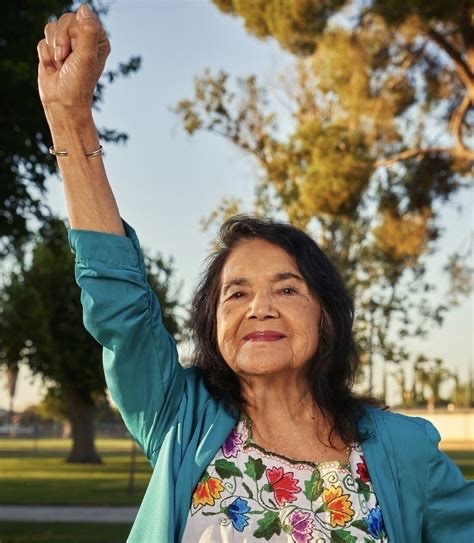

0 notes
Text
This American Life
Pacific Grove, California, 10 June 2023. Photo by the Russian Reader
Jose Martinez has lived and worked in the United States since he was 14 years old. Now 67, he drives around the Yakima Valley in Washington state checking on fellow workers.
“When it’s hot, do you have a place to protect yourself from the sun and heat?” he calls out to some workers on the side of an apple orchard on a sunny…

View On WordPress
#Barbie#farmworkers in US#Redneck Army#Starbucks#Starbucks Workers United#Tanya Tuzova#union busting#unionization campaigns in US#United Farm Workers#United Mine Workers of America#West Virginia mine wars
0 notes


